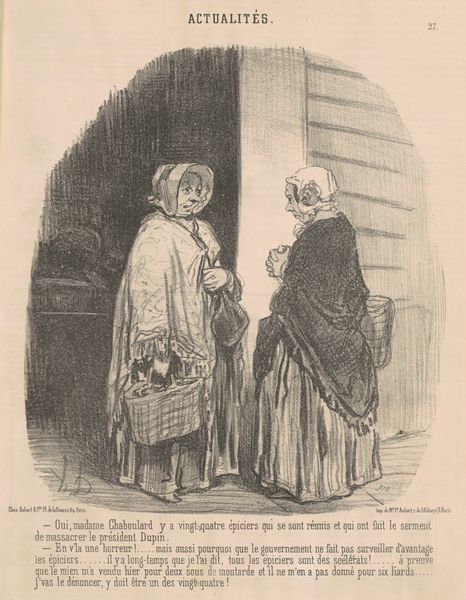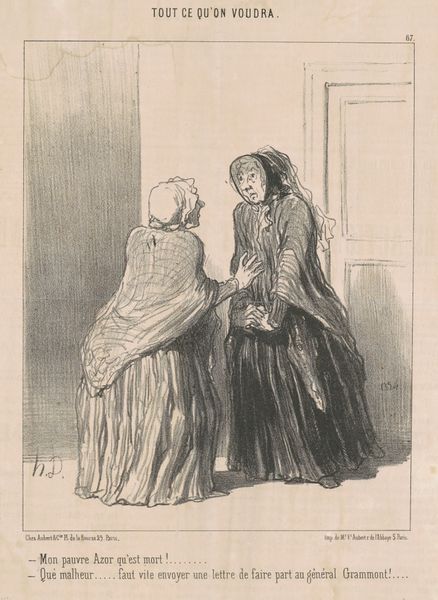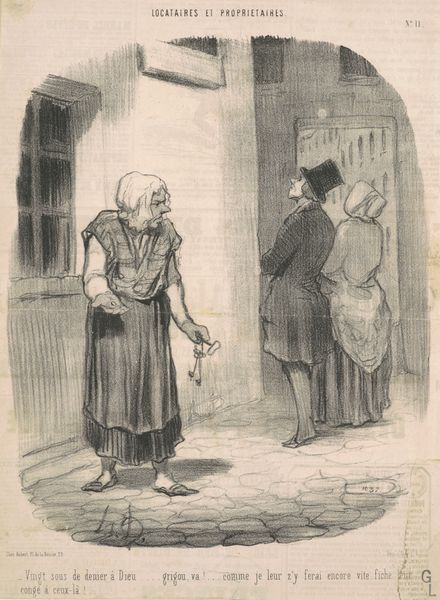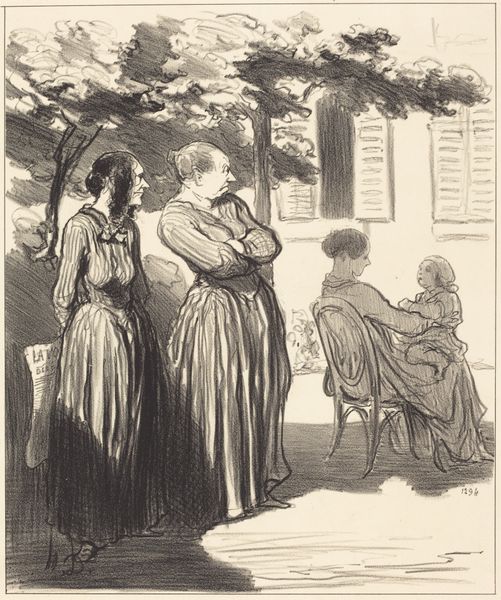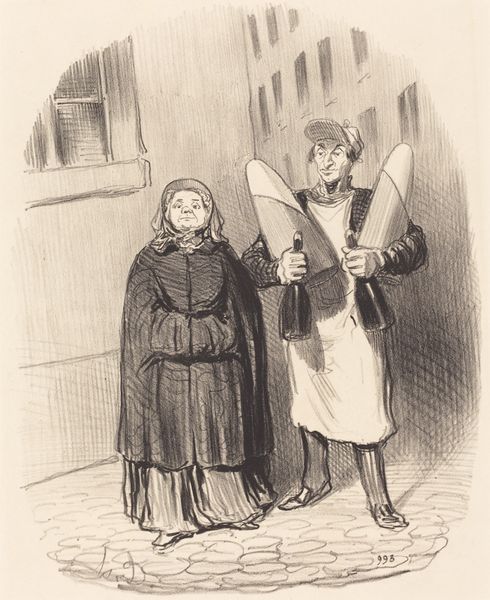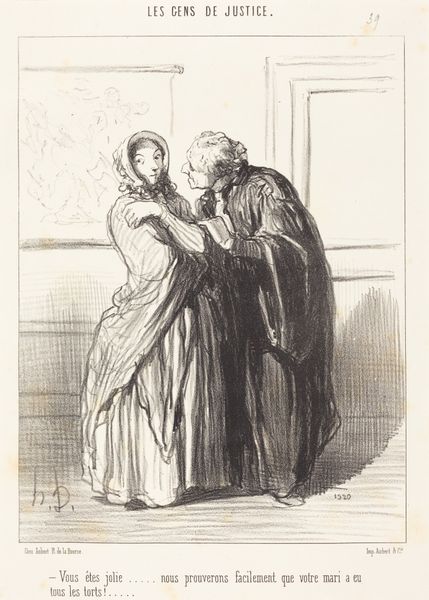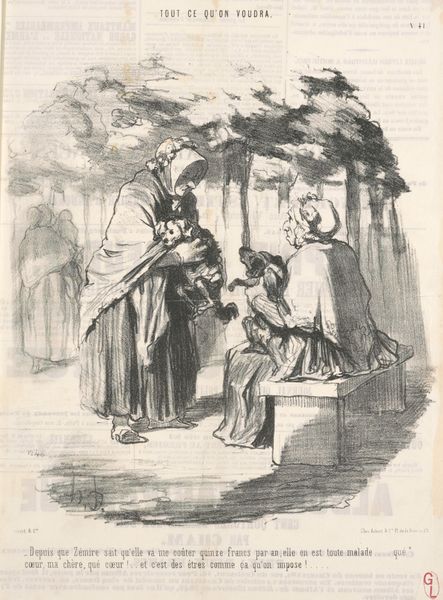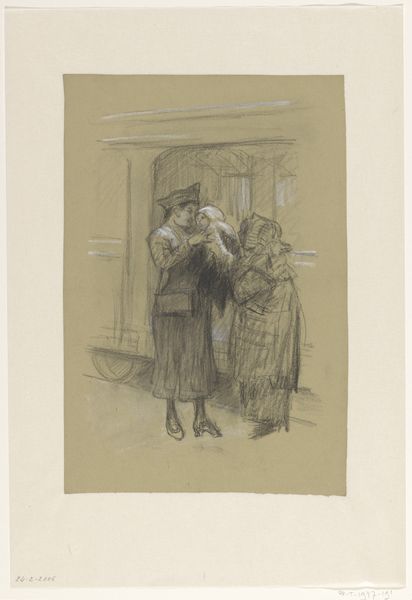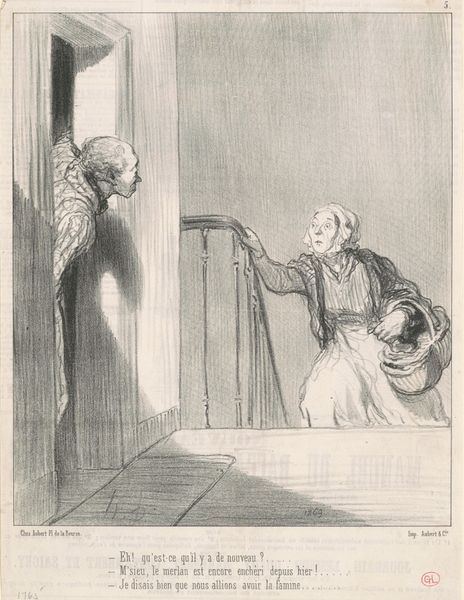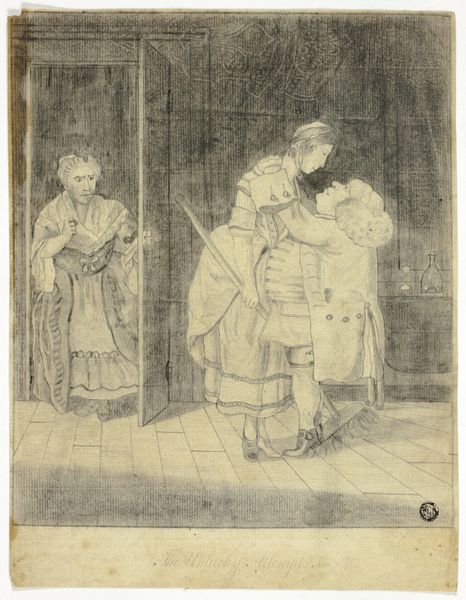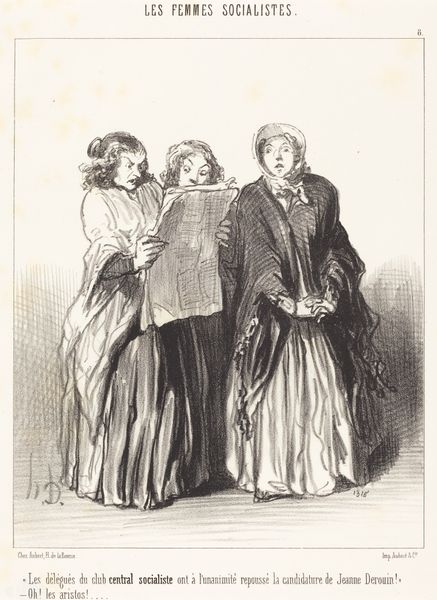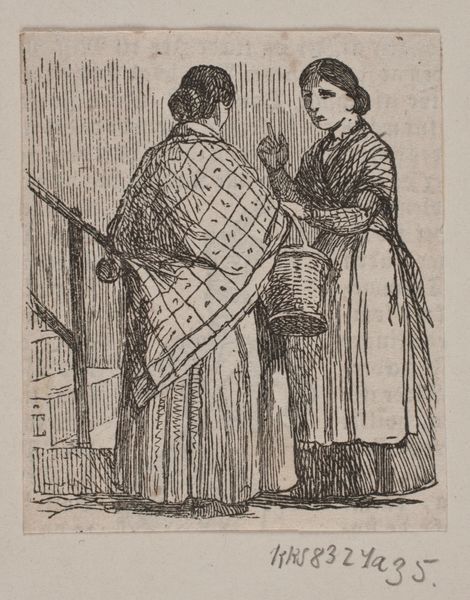![Oui, madame Chaboulard... vingt-quatre épiciers... [recto] by Honoré Daumier](/_next/image?url=https%3A%2F%2Fd2w8kbdekdi1gv.cloudfront.net%2FeyJidWNrZXQiOiAiYXJ0ZXJhLWltYWdlcy1idWNrZXQiLCAia2V5IjogImFydHdvcmtzLzg2NDUwNDhjLTMxMTUtNDQ2Yi04NDM4LWM2YjQzYjFmZDdmNC84NjQ1MDQ4Yy0zMTE1LTQ0NmItODQzOC1jNmI0M2IxZmQ3ZjRfZnVsbC5qcGciLCAiZWRpdHMiOiB7InJlc2l6ZSI6IHsid2lkdGgiOiAxOTIwLCAiaGVpZ2h0IjogMTkyMCwgImZpdCI6ICJpbnNpZGUifX19&w=3840&q=75)
Oui, madame Chaboulard... vingt-quatre épiciers... [recto] 1850
0:00
0:00
drawing, lithograph, print, ink, pencil, pen
#
portrait
#
drawing
#
imaginative character sketch
#
light pencil work
#
16_19th-century
#
quirky sketch
#
lithograph
# print
#
pen sketch
#
pencil sketch
#
personal sketchbook
#
ink
#
idea generation sketch
#
romanticism
#
pen-ink sketch
#
pencil
#
sketchbook drawing
#
pen
#
genre-painting
#
fantasy sketch
#
realism
Copyright: National Gallery of Art: CC0 1.0
Editor: This is "Oui, madame Chaboulard... vingt-quatre épiciers..." by Honoré Daumier, from 1850, made using lithography. The drawing features two women conversing, rendered in a style that feels both realistic and subtly humorous. There's something very poignant in their expressions. What strikes you about this piece? Curator: Daumier's work, especially his lithographs, are powerful precisely because of their social commentary. This piece, like many of his others, isn't just a genre scene. Consider the title, referencing grocers. Daumier was often critical of the bourgeoisie, using satire to expose their values. Do you think this image could be interpreted as a critique of consumerism or social interactions of the time? Editor: I hadn't considered it in that light, but the title definitely adds a layer of meaning. It's almost like a coded message, isn't it? And now that you mention it, their attire and posture suggest a certain class. Is he suggesting that their conversation, perhaps about these grocers, is frivolous or somehow emblematic of broader social issues? Curator: Exactly. Think about the position of women in 19th-century France, often confined to domestic roles and judged by their social standing and consumer habits. Daumier might be subtly commenting on these constraints. The medium itself, lithography, made his art accessible to a wider audience, allowing these social critiques to circulate broadly. How do you feel the drawing style, with its quick, expressive lines, contributes to this message? Editor: It gives the image an immediacy, like a snapshot of a fleeting moment. The roughness makes it feel less idealized and more like a slice of real life. I guess I see it now—it's not just a portrait, it's a commentary on a specific social environment. Curator: And through this, Daumier prompts us to reflect on how social and economic structures impact everyday lives, even today. Art is so much more meaningful once you get into all these details! Editor: It is, really opens a lot of perspectives.
Comments
No comments
Be the first to comment and join the conversation on the ultimate creative platform.
